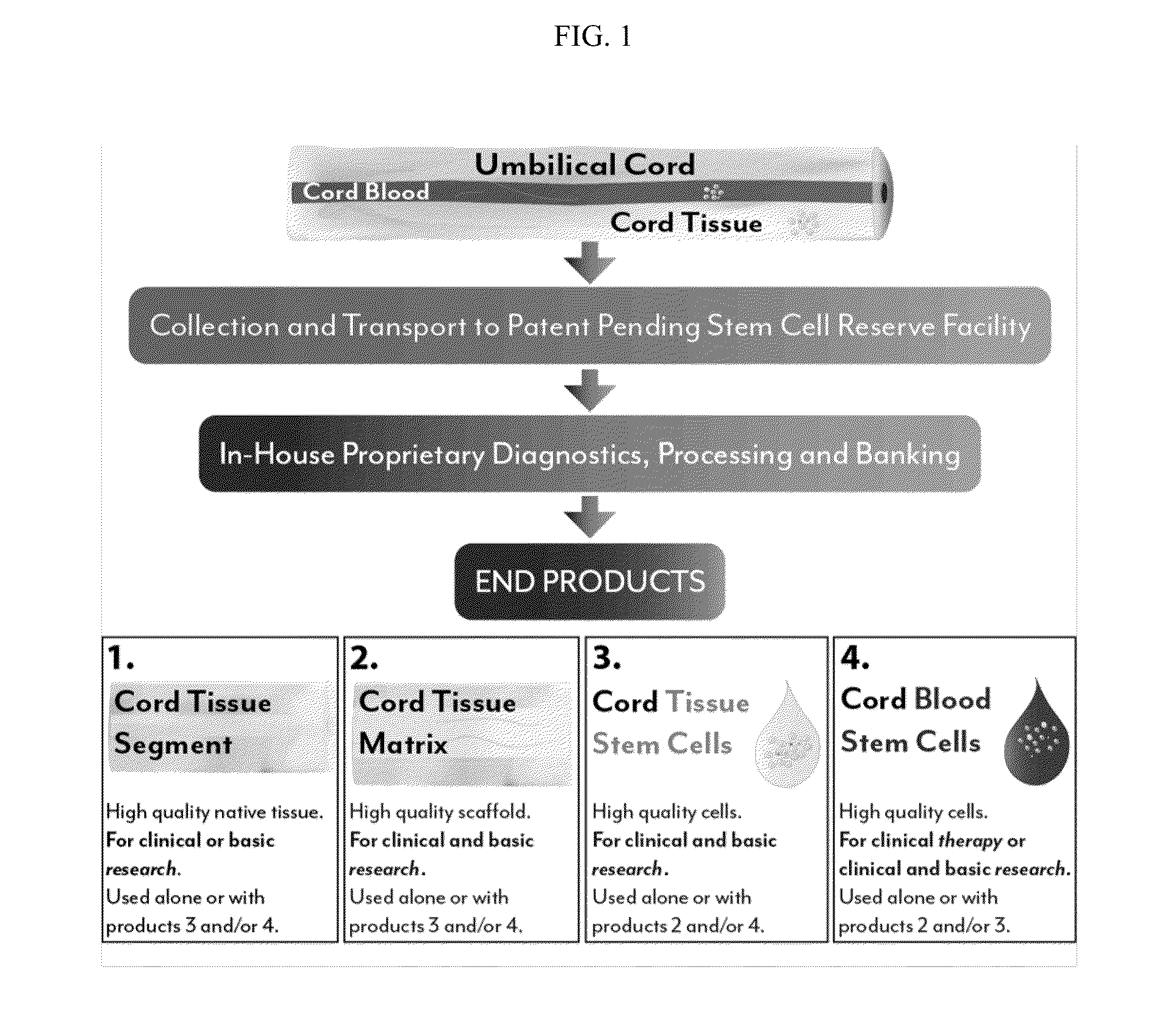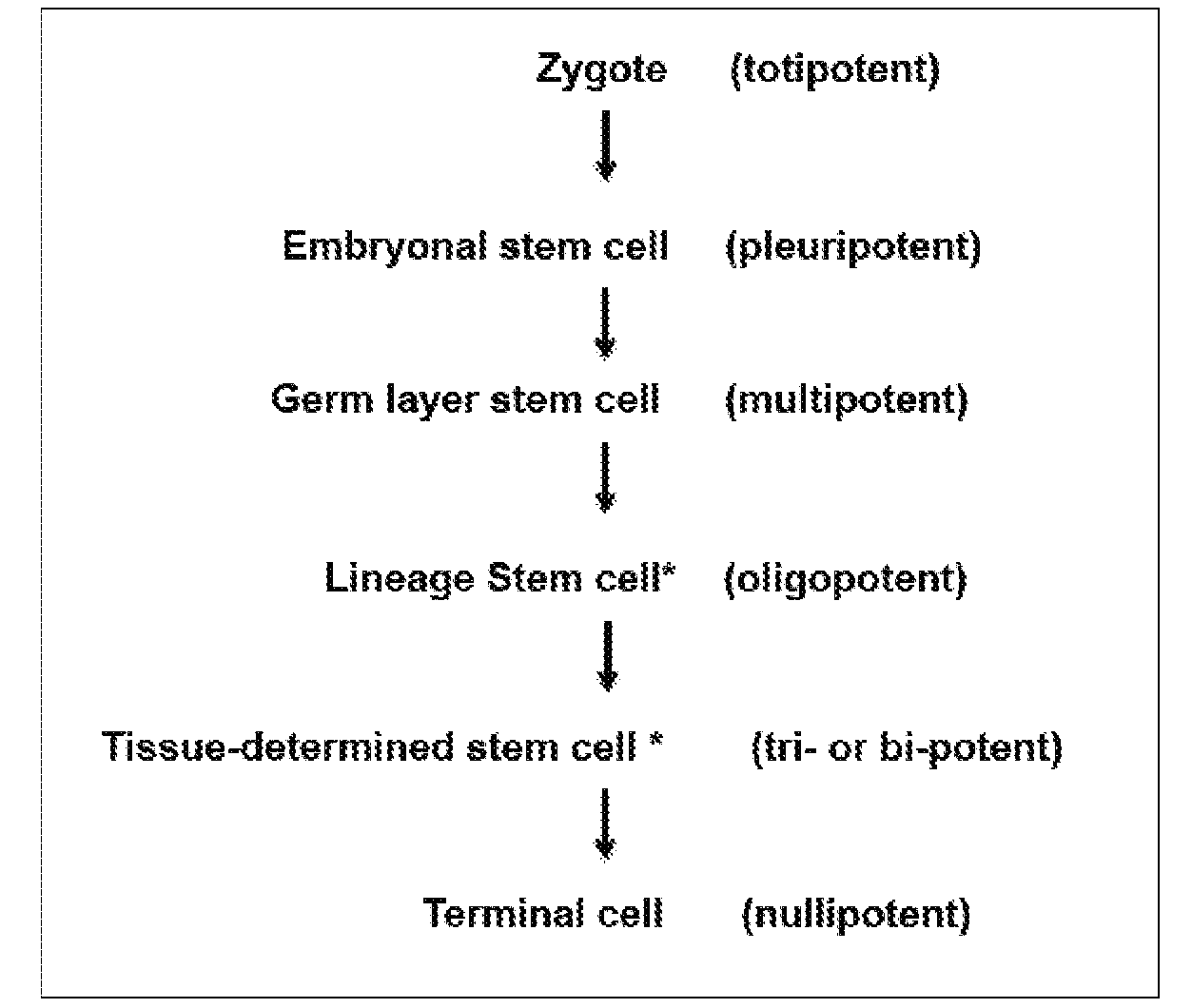Stem cells & matrix from cord tissue
a technology of stem cells and cord tissue, applied in the field of stem cells & matrix from cord tissue, can solve the problems of challenging field, incongruity in literature, and not all umbilical cord tissue cells have been tested for stem cell activity, and achieve the effect of improving regenerative potential
- Summary
- Abstract
- Description
- Claims
- Application Information
AI Technical Summary
Benefits of technology
Problems solved by technology
Method used
Image
Examples
Embodiment Construction
[0079]The present invention is a method of umbilical cord cell isolation and culture whereby the cord tissue is processed in a public and private GMP facility, in clean class <10,000 rooms containing class 100 or less biosafety cabinets. The FDA does not currently require the use of such clean rooms, but it is expected that this will become a requirement in the future, and even where not a legal requirement is a best practice and should be an industry standard.
[0080]In one aspect of this invention, a method of producing tissue matrix is provided, and the method comprises: a) obtaining a tissue from an animal; b) cleaning said tissue with a sterilizing agent; c) cutting or striating said tissue to produce one or more tissue fragments of a desired shape; d) mechanically or chemically treating said tissue fragments to produce a tissue matrix; and e) storing said tissue matrix.
[0081]The method can be realized by a combination of one or more of the following embodiments. In one embodimen...
PUM
| Property | Measurement | Unit |
|---|---|---|
| temperatures | aaaaa | aaaaa |
| temperatures | aaaaa | aaaaa |
| pressure | aaaaa | aaaaa |
Abstract
Description
Claims
Application Information
 Login to View More
Login to View More - R&D
- Intellectual Property
- Life Sciences
- Materials
- Tech Scout
- Unparalleled Data Quality
- Higher Quality Content
- 60% Fewer Hallucinations
Browse by: Latest US Patents, China's latest patents, Technical Efficacy Thesaurus, Application Domain, Technology Topic, Popular Technical Reports.
© 2025 PatSnap. All rights reserved.Legal|Privacy policy|Modern Slavery Act Transparency Statement|Sitemap|About US| Contact US: help@patsnap.com



